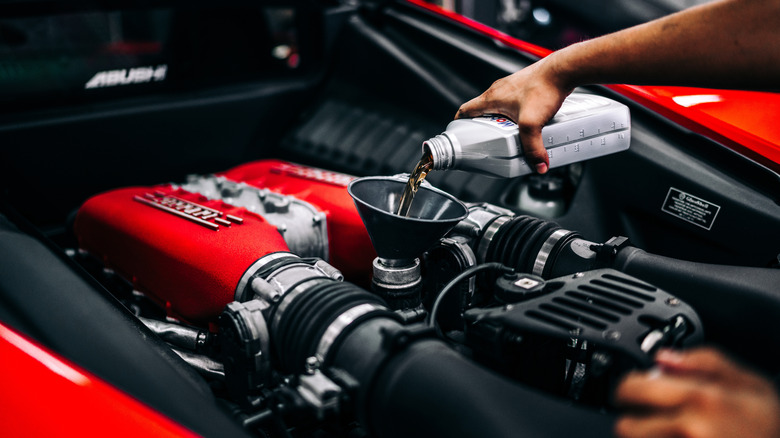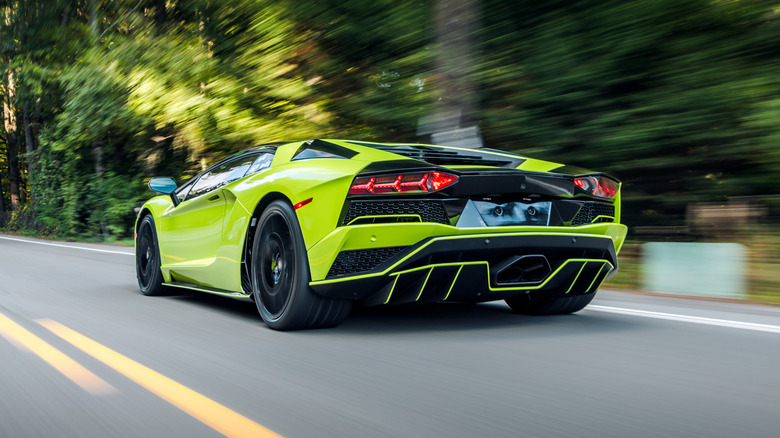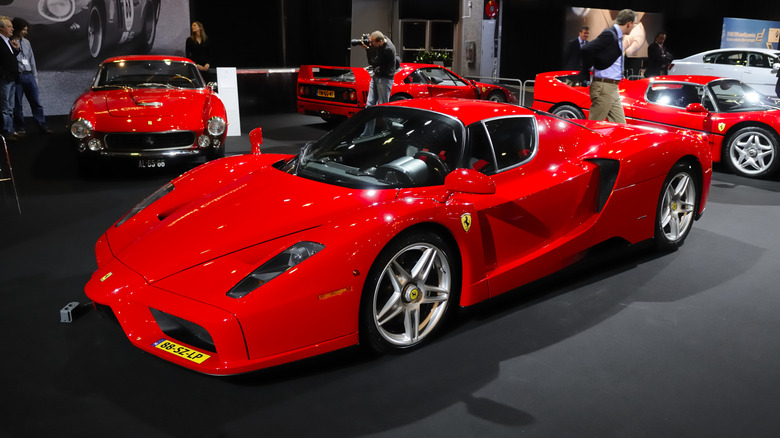
Frequent oil changes prevent sludge formation and are one of the most important aspects of car maintenance that improve engine longevity. A typical oil change using conventional oil is the most affordable option, with costs ranging between $20 and $100, depending on the type of car and engine size. Synthetic oils will slightly increase the price, but synthetics are better than mineral oil since they last longer and require fewer oil changes over time. As for the price, you can expect to pay around
$60 to upwards of $125 for a synthetic oil change.
The price figures apply to your typical sedan or small crossover. You can save more money with a DIY oil change, and our step-by-step guide will show you the ropes. But have you ever wondered how much it would cost to change the oil in, let's say, an exotic supercar like a Lamborghini or McLaren? Buying a supercar or any vehicle from an uber-luxury auto brand entails significantly higher maintenance costs compared to a typical Civic or Accord, and this includes the humble oil change. Listed below are the four cars with the most expensive oil changes, with the priciest almost costing as much as a 2025 Toyota Corolla sedan.
Read more: 8 Enthusiast Cars That Are Absurdly Overrated
Lamborghini Aventador

Any Lamborghini will cost more to service and maintain than a Honda or Mazda. Changing the oil in a Lamborghini Gallardo costs between $500 and $700. At the same time, an annual service for a Lamborghini Urus starts at around $2,500, including an oil change, tire rotation, and inspection. However, the Lamborghini Aventador takes the cake, with oil changes starting at upwards of $1,000.
Moreover, an annual service would cost around $5,000, regardless of whether you drove the car for a few thousand miles or if it spent most of its life in your climate-controlled living room. And if you choose to relish the splendor of a screaming V12 more frequently, you'll most likely pay around $2,000 for a set of four new tires when the old ones go bald, which, in a Lamborghini, is not a hard thing to do.
If you think the $1,000 oil change is not too rich for your wallet, maybe the fuel costs will change your mind: Drive it frequently, and the annual fuel costs could ring upwards of $6,500.
Ferrari Enzo

What else could you expect from a limited-production Italian supercar named after its charismatic yet ruthless founder? The Ferrari Enzo ranks as one of the fastest Ferraris ever built, and it's essentially a Formula 1 car in hypercar clothing. It was the first to feature carbon-ceramic brakes from the factory, and it boasts a midship-mounted F140 6.0-liter V12 engine that produces 651 horsepower, enough to make it the quickest Ferrari of its time.
With that much twist, the Enzo could rocket from 0 to 60 mph in 3.65 seconds. Only 399 Enzos were produced from 2002 to 2004, and Ferrari donated the final car (#400) to Pope John Paul II, which the pontiff and the Vatican auctioned in 2015 for a staggering $6,050,000.
In terms of oil changes, you'll spend around $1,400 to drain and replenish the lifeblood of the Enzo's V12. Furthermore, additional servicing and fluid checks are estimated to incur $9,000 in maintenance costs, while a comprehensive brake job is approximately $40,000. And that slick six-speed automated manual F1 transmission? A new clutch assembly costs $6,000.
McLaren F1

Like the Ferrari Enzo, the McLaren F1 is typically a road-legal racing car. However, the F1 has been strutting its wares since 1992, and it essentially kick-started the supercar revolution in the early 90s. Credit also goes to the iconic Bugatti EB110, an ambitious supercar that almost bankrupted the automaker and was made in limited numbers. However, the McLaren F1 outshone (literally) all its competitors with its outright speed and gold-lined engine bay.
How quick is the McLaren F1? It accelerates from 0 to 60 mph in 3.2 seconds, from 0 to 200 mph in 28 seconds, and has a top speed of up to 230 mph. It did all that in 1994, which makes it doubly impressive. More numbers are on the way, since a routine oil change for a McLaren F1 costs $8,000, while the running costs are about $30,000 annually. If you hit a nail while driving your exotic McLaren F1, it costs around $6,000 since McLaren will insist on replacing both tires on the same axle.
Bugatti Veyron

As it stands, the Bugatti Veyron has the most expensive oil change of any production automobile. It broke the McLaren F1's longstanding production car top speed record, capable of achieving 268 mph and officially making it one of the fastest Bugattis ever. The Chiron remains the speed king and has since eclipsed the Veyron as the quickest Bugatti with the highest top speed, but it doesn't change the fact that changing the oil in a Veyron is not for the faint of heart (or wallet).
The Veyron's dry-sump lubrication system features 16 drain plugs, most of which are only accessible after removing certain underbody panels. Moreover, refilling the quad-turbo W16 engine with fresh oil requires removing the rear deck and rear fenders and then reassembling everything afterward. The Veyron needs 16 quarts (12 to 18 liters) of premium synthetic oil, depending on the specific model. With so much oil and labor involved, it's no small wonder that Veyron owners are spending upwards of $20,000 for an oil change. In addition, it's not unusual for a Veyron oil change and servicing to take more than 24 hours.
Want the latest in tech and auto trends? Subscribe to our free newsletter for the latest headlines, expert guides, and how-to tips, one email at a time.
Read the original article on SlashGear.












